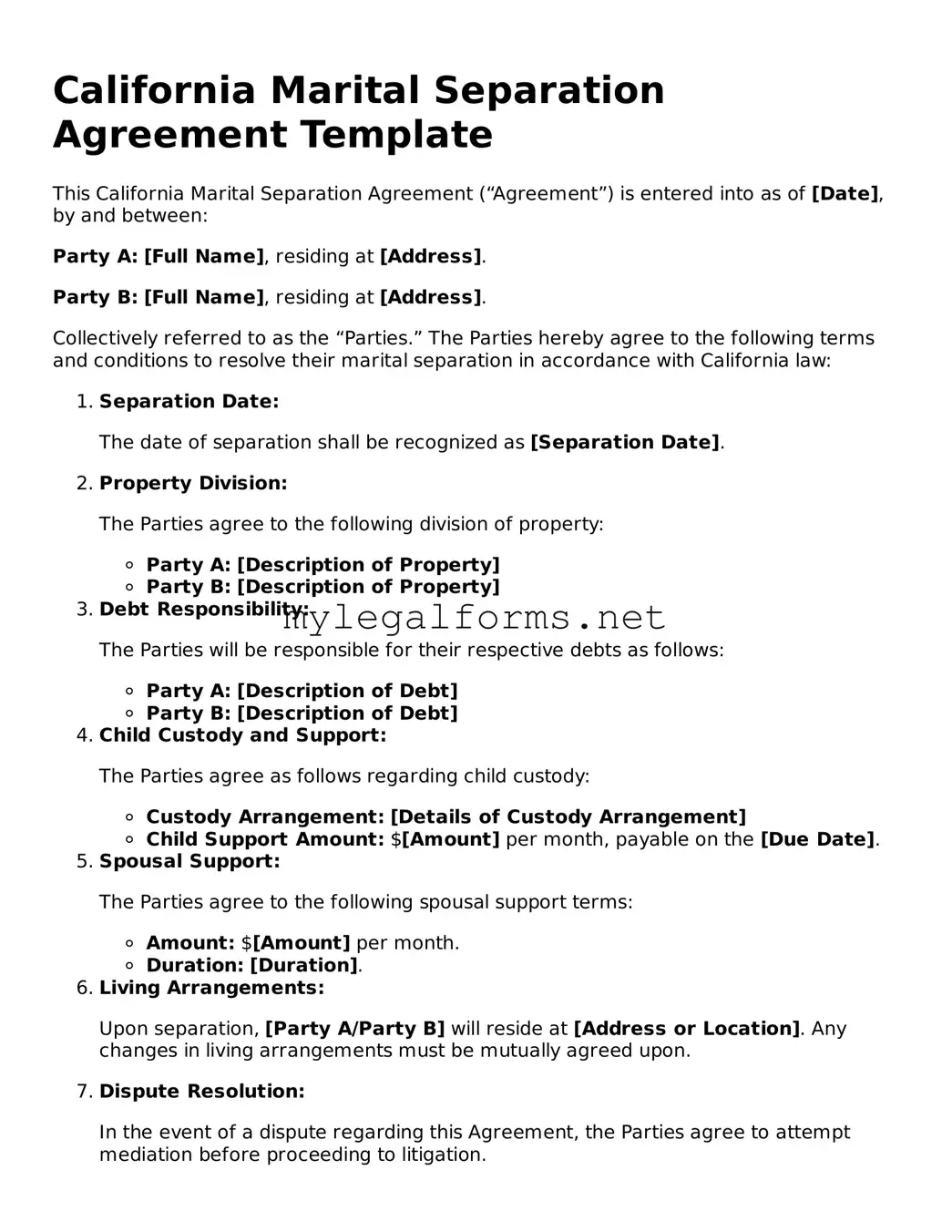Filling out the California Marital Separation Agreement form can be a daunting task, and many individuals make common mistakes that can complicate the process. One frequent error is failing to provide complete information. Each section of the form requires specific details about assets, debts, and personal information. Omitting even minor details can lead to misunderstandings or disputes later on.
Another mistake is not being clear about the terms of the separation. Vague language can create confusion. For instance, if the agreement mentions "shared custody" without specifying the schedule, it can lead to disagreements down the line. Clarity is essential to ensure that both parties understand their rights and responsibilities.
People often underestimate the importance of accurately assessing their assets and debts. Overvaluing or undervaluing property can skew the agreement. It is crucial to conduct a thorough inventory of all shared and individual assets. This includes real estate, vehicles, bank accounts, and personal belongings.
Additionally, some individuals neglect to consider tax implications when drafting their agreements. Certain decisions made during separation can have long-term financial consequences. Consulting a tax professional can provide insights into how the separation might affect future tax filings.
Another common oversight is failing to address spousal support or alimony. Even if one party does not intend to seek support, it is important to include a clause that outlines this decision. Leaving it out can lead to future claims that could complicate the separation.
Inadequate attention to child support arrangements is also a significant mistake. The agreement should clearly outline the amount of support, payment schedule, and any conditions for adjustments. Courts typically require that child support be calculated according to established guidelines, so it is wise to familiarize oneself with these rules.
People sometimes forget to include a dispute resolution process in their agreements. This can lead to lengthy and costly legal battles if disagreements arise in the future. Including a method for resolving conflicts, such as mediation, can save time and resources.
Another error is failing to sign and date the agreement properly. Both parties must sign the document for it to be legally binding. In some cases, witnesses or notarization may be required, depending on the circumstances. Ensuring that all signatures are in place is crucial.
Lastly, individuals often overlook the need to keep copies of the signed agreement. After the form is completed and filed, retaining copies is essential for future reference. This ensures that both parties have access to the terms they agreed upon, which can prevent disputes later.
